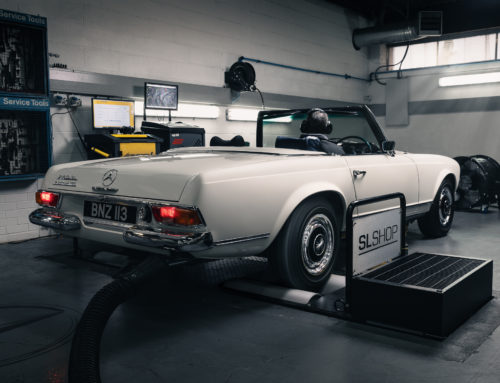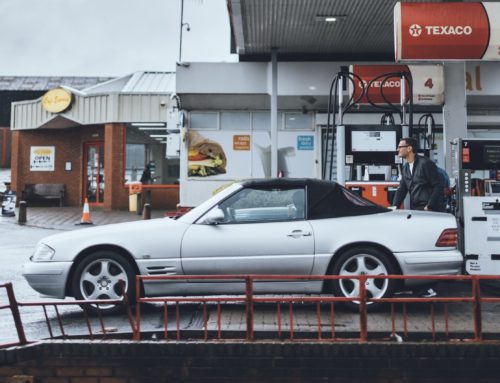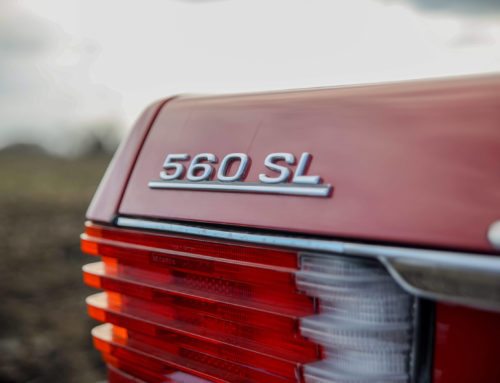Cars do not like sitting unused for great lengths of time. Batteries lose charge, brakes start to seize, electric motors begin to stick, fluids begin to break down… the amount of time it takes for these things to happen can vary but it’s important to understand that your car needs regular use.
Here’s our Top 11 pre-Winter storage tips for keeping your car tip top over winter.

1. Prepare the car
Have the oil and coolant changed before the car goes away for winter, but speak with a mechanic when having this done. If your car is going to be stored for more than a few months, you may want to consider an oil that doesn’t use additives to protect the inside of the engine. Think about the basics of long term protection, there are small jobs that can make a big difference. Why not feed the leather inside the car with a good quality balm? Leather dries out over time, as do the seals and rubbers of the car. A little silicone grease on any suspect rubbers and seals will go a long way to protecting the life and functionality of the seals.
Browse our range of replacement seals
2. Choose the right Fuel
With the introduction of E10 fuel, owners now need to be very aware of how the higher concentration of ethanol can affect their car. We advise you avoid using E10 and certainly don’t store your car with a full tank of E10.
You should also make sure the tank is full so as to avoid condensation in the space between the tank edge and the fuel. This will prevent dilution of the fuel and of course, avoid corrosion of the fuel tank over long periods of time.
A fuel additive can help reduce the impact of E10 fuel if this is what you are deciding to use:
3. Clean off road salt before storage
If you live somewhere that salts the roads in winter, it’s vital that you clean off any salt that may have gotten into hard to reach areas, but it’s also really important to dry the car off before parking it up. It’s not enough to just hose down the car and lock it away, water could sit and corrode the car even whilst it’s secured in your garage. Take your time preparing the car for storage with a proper clean down, and if you can, let the car dry before parking it away.
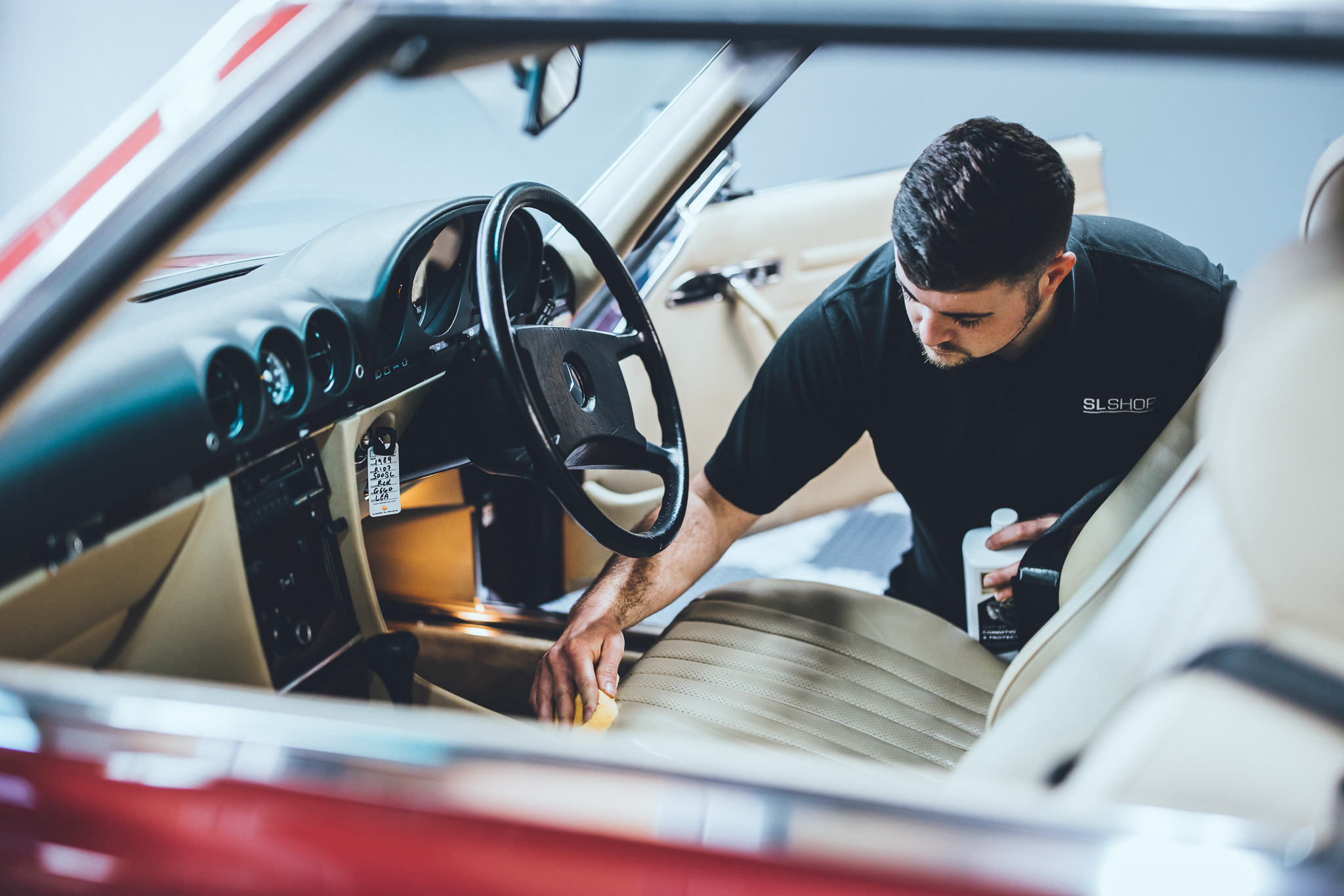
4. Clean the car properly
Make sure your car is as clean as you can get it before you park it away, paying particular attention to inside the wheels aches and the cabin interior. The R107 is notorious for moisture in the cabin, so a good clean is a great chance to check the car top to bottom for leaks and signs of water ingress.
If you’re storing the car without the hardtop always, be sure to fix the soft top in place. Lower the side windows by 2 inches to ensure air flow inside. Don’t lower the soft top if the temperatures are at freezing point to risk the plastic windows of cracking.
Check the car is dry before putting your car cover on, and plump for a breathable cover – you’ll be much more likely to avoid any mould issues with a premium breathable cover.
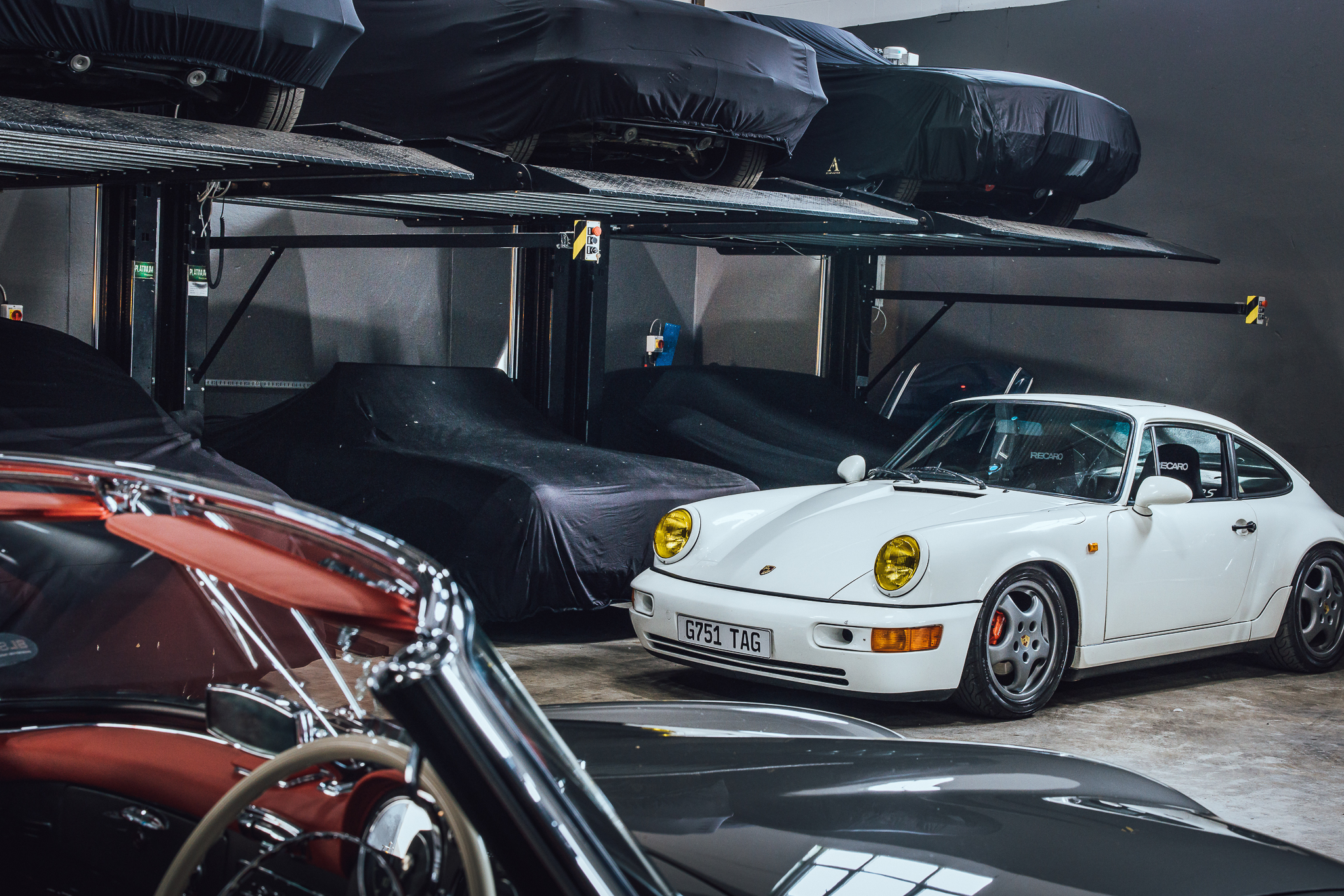
5. Pump up the tyres
Ensuring the tyres are pumped up is such a simple thing to do, but it’s easily forgotten. Storing your car with flat or deflated tyres is one way to speed up the degrading process – why shell out money on tyres that you could have looked after a little better? Using a tyre gel on the outside of the tyre is another way to protect and prolong the tyre wall. Correctly inflated tyres are also much easier to examine for cracks and bulging during your regular checks. Raise the tyre pressures by 45 psi if stored for longer periods.
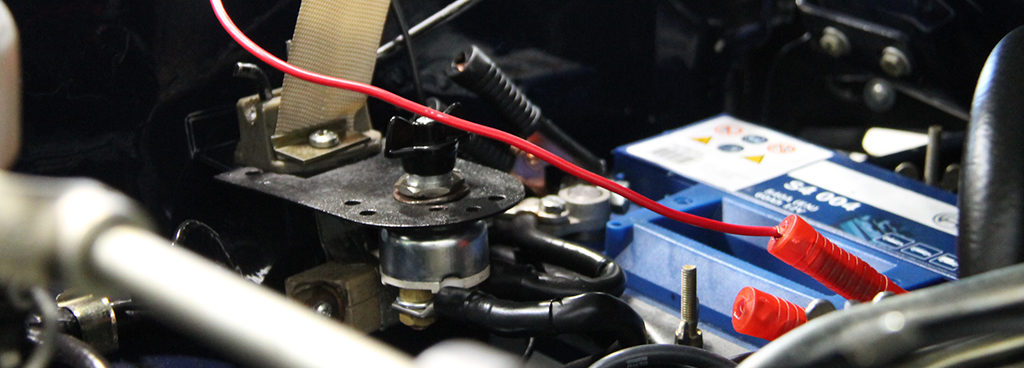
6. Keep the battery topped up
We always recommend a trickle charger when a car is being stored for any length of time. Modern, intelligent trickle chargers do more than just keep the battery from going flat, they’ll also optimise the life of the battery by regulating the amount of power that’s used. They can sense when a battery is starting to fade, and can maintain the life of a battery without over doing it.

7. Use a car cover
You might have the cleanest garage in the world but why risk the potential of anything happening to your paintwork? Insects, birds, shifting buildings and all manner of things can fall on unsuspecting cars. Bird poo can contain harmful acids that attack paintwork, so if there’s any risk of that be sure to keep your car under a good quality cover.
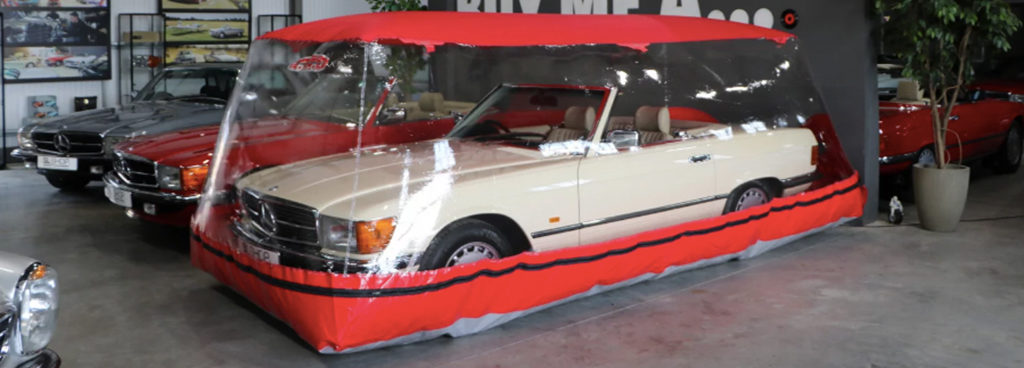
7a. Use a Carcoon
We’ve called this one 6a because it falls under the Car Cover banner, but it’s also a superb way to store your car. A Carcoon is a controlled, climate managed environment in which to store your car. They’re easy to install and offer the best long term storage solution for your car to keep it away from the elements and maintain a controlled temperature.
8. Use a vapour barrier underneath the car
Consider placing a sheet of vapour barrier plastic under the car on the floor if it’s being stored indoors. This will prevent water vapour buildup in an unheated garage, and also makes it very easy to spot fluid leaks when the car is removed from storage. As we’ve said, the R107 is notorious for letting water in through failing seals and issues with the bulkhead, so everything you can do to avoid this will be worthwhile
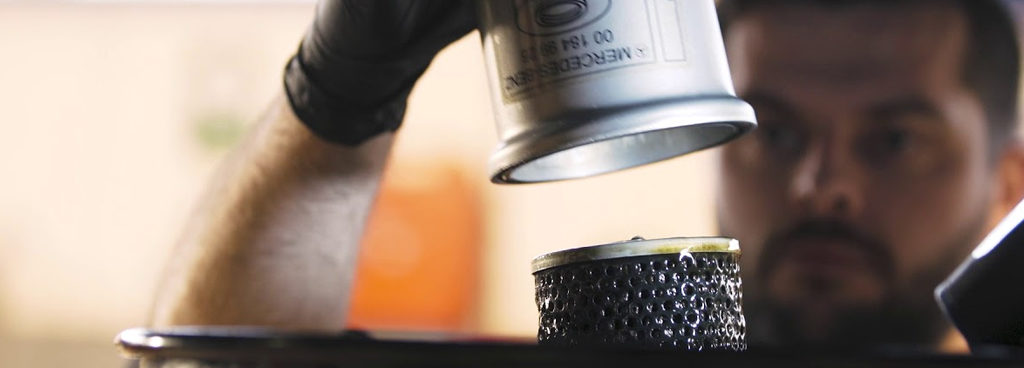
9. Keep an eye on the levels
Before you park your car away, check the levels and make a note of where they sit. That way you’ll have a record and will be able to see if the car has lost any fluids even if they haven’t dripped onto the floor… Which is our second point, check underneath the car regularly. If you see any fluids leaking, it’s a sure sign that there’s an issue somewhere within the car. This is such a simple thing to overlook.
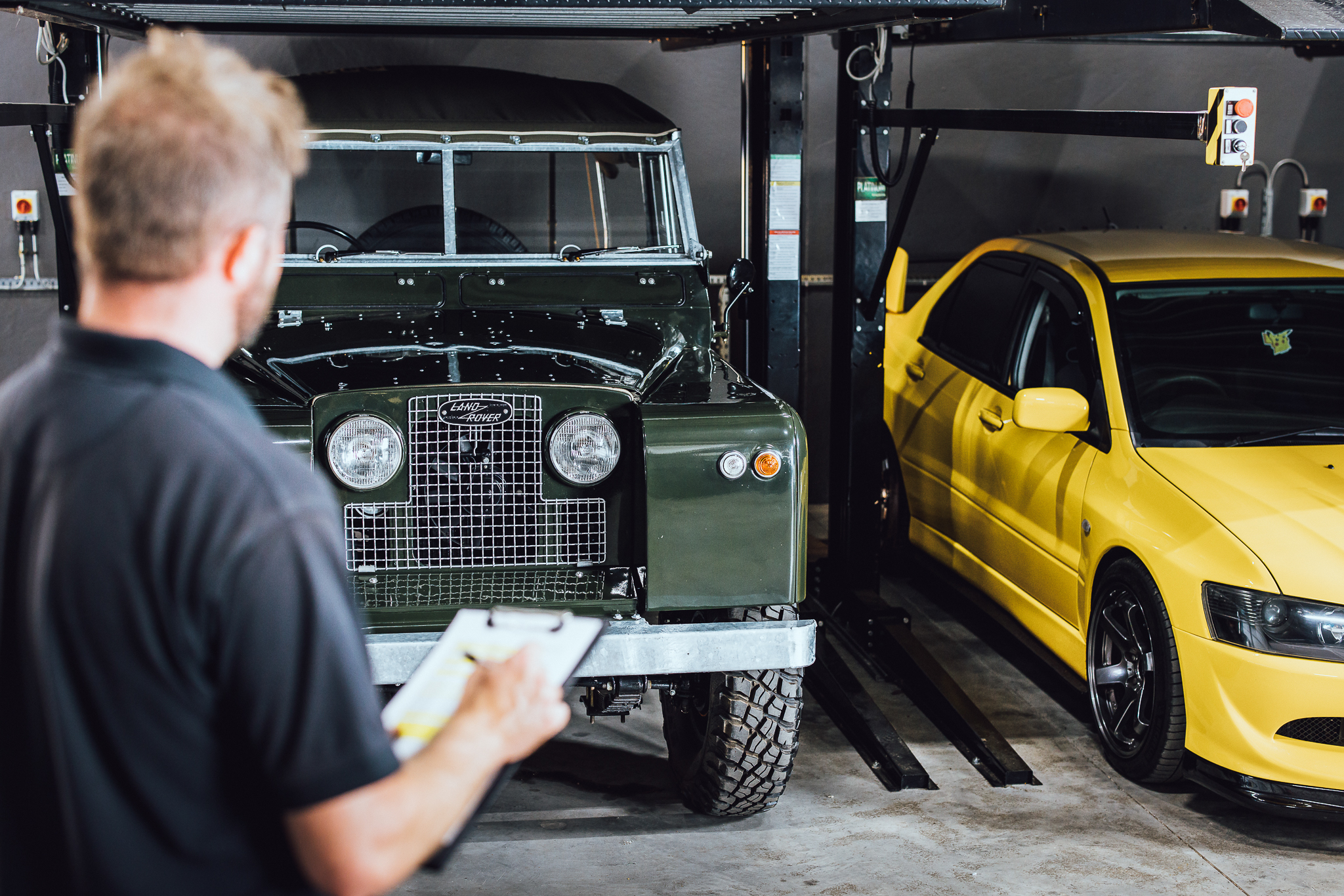
Top all your fluids up before storage, including the fuel. If storing for long periods then the fuel tank should be brimmed. A tank that’s anything less than full can start to condensate, and condensation will lead to rust and corrosion and contamination of the fuel. A full tank leaves no space for condensation. Owners must AVOID E10 when storing their car.
Browse our service kits, oil, fluids and filters
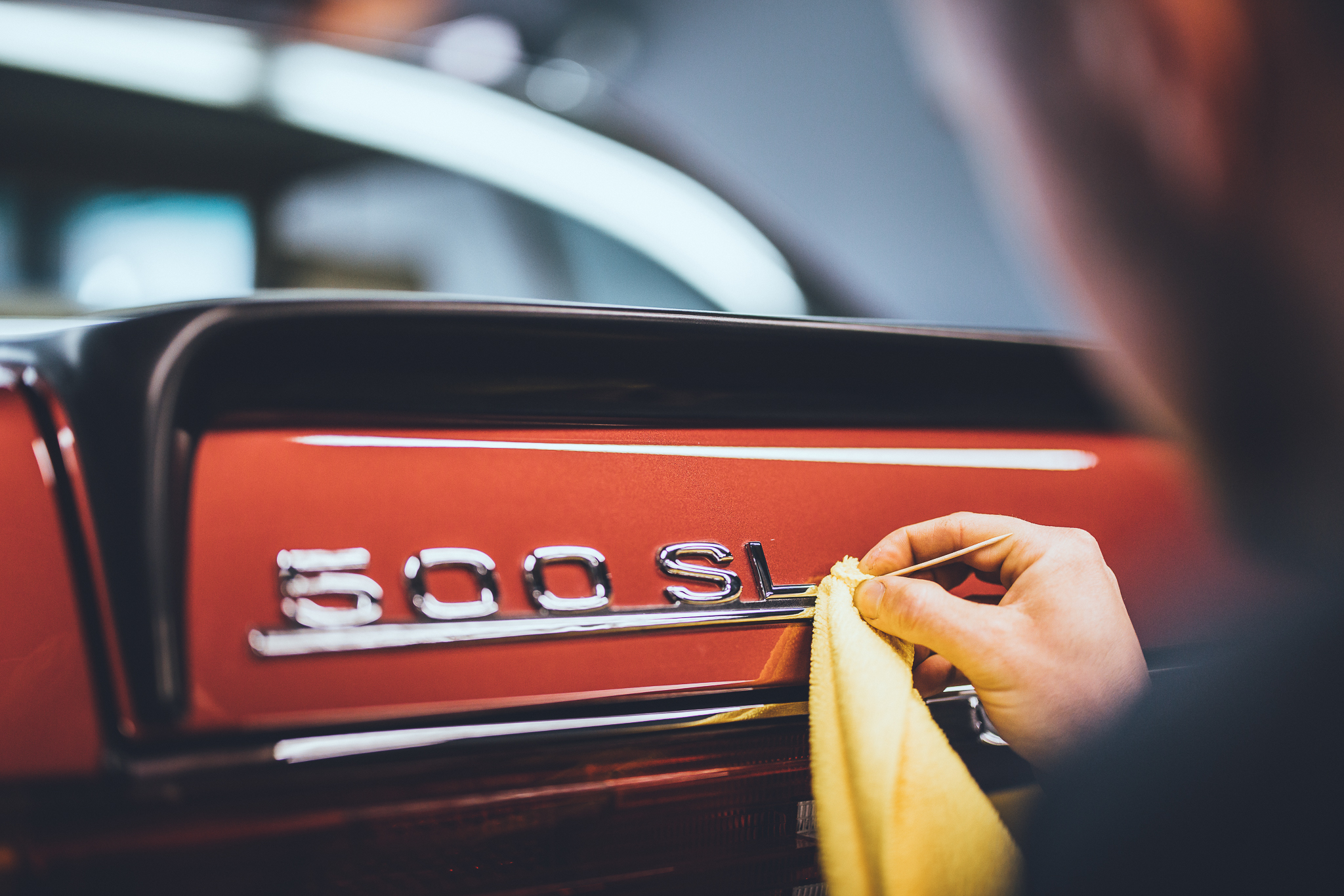
10. Get some exercise
To keep the engine, drivetrain and brakes in good running order, you should take your car out for a run up to temperature periodically. Sticking brakes, fading batteries and jammed electronics are just three symptoms of a car that’s left standing. Stretch the legs, let the car come up to temperature, let the belts get going and give the car a good run before returning to storage.
It’s important to take it for a run, just getting the car up to temperature causes moisture to form in the crank case, which can lead to problems further down the line. Aim to go for a run of 10 miles or more, which is enough for the engine to burn off any moisture locked within. A good way to ensure you’re doing the distance is to zero the trip meter every time your car goes back into storage, so you can check how many miles you cover on the test runs. Getting out and turning the wheels helps avoid flat spots on the tyres, too. Don’t forget that the longer a car goes without active use the more problems are likely to arise when you finally want to use it.
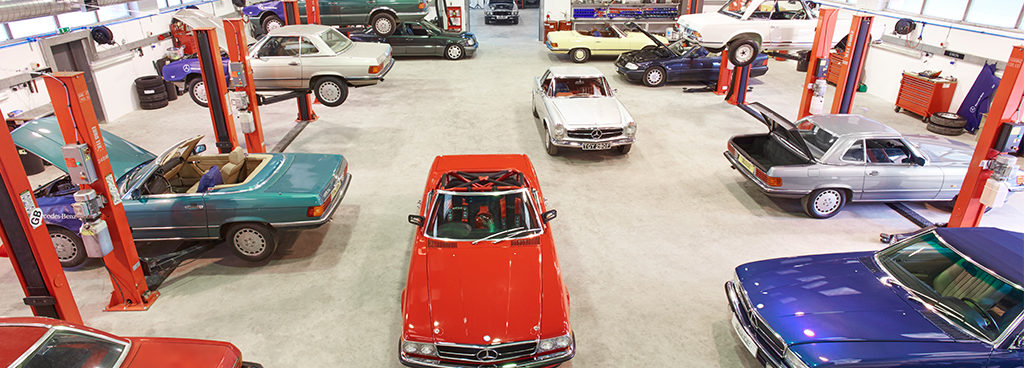
11. Have an expert check the car over before summer use commences
Don’t use the first day of spring as your shakedown and fault finding post winter run. Get the small issues resolved before the sun starts to shine! Many of our customers store their cars over winter, so why not have the experts given your car a post hibernation check?
Here at The SLSHOP we offer a pre season check.
You’ll be presented with a car that’s ready to use, with the levels topped up and the soft top adjusted exactly as it should be. This is a great chance to get a second pair of eyes on your car, an opportunity to spot small maladies that could easily be overlooked.
Share With Your Fellow Enthusiasts
Cars do not like sitting unused for great lengths of time. Batteries lose charge, brakes start to seize, electric motors begin to stick, fluids begin to break down… the amount of time it takes for these things to happen can vary but it’s important to understand that your car needs regular use.
Here’s our Top 11 pre-Winter storage tips for keeping your car tip top over winter.

1. Prepare the car
Have the oil and coolant changed before the car goes away for winter, but speak with a mechanic when having this done. If your car is going to be stored for more than a few months, you may want to consider an oil that doesn’t use additives to protect the inside of the engine. Think about the basics of long term protection, there are small jobs that can make a big difference. Why not feed the leather inside the car with a good quality balm? Leather dries out over time, as do the seals and rubbers of the car. A little silicone grease on any suspect rubbers and seals will go a long way to protecting the life and functionality of the seals.
Browse our range of replacement seals
2. Choose the right Fuel
With the introduction of E10 fuel, owners now need to be very aware of how the higher concentration of ethanol can affect their car. We advise you avoid using E10 and certainly don’t store your car with a full tank of E10.
You should also make sure the tank is full so as to avoid condensation in the space between the tank edge and the fuel. This will prevent dilution of the fuel and of course, avoid corrosion of the fuel tank over long periods of time.
A fuel additive can help reduce the impact of E10 fuel if this is what you are deciding to use:
3. Clean off road salt before storage
If you live somewhere that salts the roads in winter, it’s vital that you clean off any salt that may have gotten into hard to reach areas, but it’s also really important to dry the car off before parking it up. It’s not enough to just hose down the car and lock it away, water could sit and corrode the car even whilst it’s secured in your garage. Take your time preparing the car for storage with a proper clean down, and if you can, let the car dry before parking it away.

4. Clean the car properly
Make sure your car is as clean as you can get it before you park it away, paying particular attention to inside the wheels aches and the cabin interior. The R107 is notorious for moisture in the cabin, so a good clean is a great chance to check the car top to bottom for leaks and signs of water ingress.
If you’re storing the car without the hardtop always, be sure to fix the soft top in place. Lower the side windows by 2 inches to ensure air flow inside. Don’t lower the soft top if the temperatures are at freezing point to risk the plastic windows of cracking.
Check the car is dry before putting your car cover on, and plump for a breathable cover – you’ll be much more likely to avoid any mould issues with a premium breathable cover.

5. Pump up the tyres
Ensuring the tyres are pumped up is such a simple thing to do, but it’s easily forgotten. Storing your car with flat or deflated tyres is one way to speed up the degrading process – why shell out money on tyres that you could have looked after a little better? Using a tyre gel on the outside of the tyre is another way to protect and prolong the tyre wall. Correctly inflated tyres are also much easier to examine for cracks and bulging during your regular checks. Raise the tyre pressures by 45 psi if stored for longer periods.

6. Keep the battery topped up
We always recommend a trickle charger when a car is being stored for any length of time. Modern, intelligent trickle chargers do more than just keep the battery from going flat, they’ll also optimise the life of the battery by regulating the amount of power that’s used. They can sense when a battery is starting to fade, and can maintain the life of a battery without over doing it.

7. Use a car cover
You might have the cleanest garage in the world but why risk the potential of anything happening to your paintwork? Insects, birds, shifting buildings and all manner of things can fall on unsuspecting cars. Bird poo can contain harmful acids that attack paintwork, so if there’s any risk of that be sure to keep your car under a good quality cover.

7a. Use a Carcoon
We’ve called this one 6a because it falls under the Car Cover banner, but it’s also a superb way to store your car. A Carcoon is a controlled, climate managed environment in which to store your car. They’re easy to install and offer the best long term storage solution for your car to keep it away from the elements and maintain a controlled temperature.
8. Use a vapour barrier underneath the car
Consider placing a sheet of vapour barrier plastic under the car on the floor if it’s being stored indoors. This will prevent water vapour buildup in an unheated garage, and also makes it very easy to spot fluid leaks when the car is removed from storage. As we’ve said, the R107 is notorious for letting water in through failing seals and issues with the bulkhead, so everything you can do to avoid this will be worthwhile

9. Keep an eye on the levels
Before you park your car away, check the levels and make a note of where they sit. That way you’ll have a record and will be able to see if the car has lost any fluids even if they haven’t dripped onto the floor… Which is our second point, check underneath the car regularly. If you see any fluids leaking, it’s a sure sign that there’s an issue somewhere within the car. This is such a simple thing to overlook.

Top all your fluids up before storage, including the fuel. If storing for long periods then the fuel tank should be brimmed. A tank that’s anything less than full can start to condensate, and condensation will lead to rust and corrosion and contamination of the fuel. A full tank leaves no space for condensation. Owners must AVOID E10 when storing their car.
Browse our service kits, oil, fluids and filters

10. Get some exercise
To keep the engine, drivetrain and brakes in good running order, you should take your car out for a run up to temperature periodically. Sticking brakes, fading batteries and jammed electronics are just three symptoms of a car that’s left standing. Stretch the legs, let the car come up to temperature, let the belts get going and give the car a good run before returning to storage.
It’s important to take it for a run, just getting the car up to temperature causes moisture to form in the crank case, which can lead to problems further down the line. Aim to go for a run of 10 miles or more, which is enough for the engine to burn off any moisture locked within. A good way to ensure you’re doing the distance is to zero the trip meter every time your car goes back into storage, so you can check how many miles you cover on the test runs. Getting out and turning the wheels helps avoid flat spots on the tyres, too. Don’t forget that the longer a car goes without active use the more problems are likely to arise when you finally want to use it.

11. Have an expert check the car over before summer use commences
Don’t use the first day of spring as your shakedown and fault finding post winter run. Get the small issues resolved before the sun starts to shine! Many of our customers store their cars over winter, so why not have the experts given your car a post hibernation check?
Here at The SLSHOP we offer a pre season check.
You’ll be presented with a car that’s ready to use, with the levels topped up and the soft top adjusted exactly as it should be. This is a great chance to get a second pair of eyes on your car, an opportunity to spot small maladies that could easily be overlooked.
Share With Your Fellow Enthusiasts
More from Journal
CARE
THE ULTIMATE CERTIFIED SERVICING INVESTMENT PLAN
Your ownership journey matters to us, which is why we have created a simple certified servicing investment plan, tailored to your individual needs and aspirations.
Start investing today and our dedicated CARE team will work with you to increase the value and enjoyment you receive from your vehicle.

STAY IN TUNE WITH SLSHOP MOMENTS
As part of SLSHOP’s community of enthusiasts, you’ll be the first to hear about events and tours, key product offers, exciting stories from owners around the world and of course… our latest additions to the showroom. So, be the first to know and you might just sneak a car on your driveway or take your car’s condition to new heights with our exclusive replacement parts.
Or, visit SLSHOP Journal

